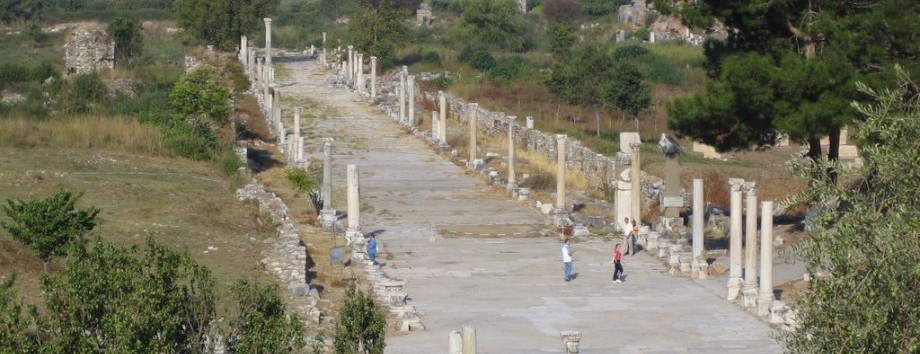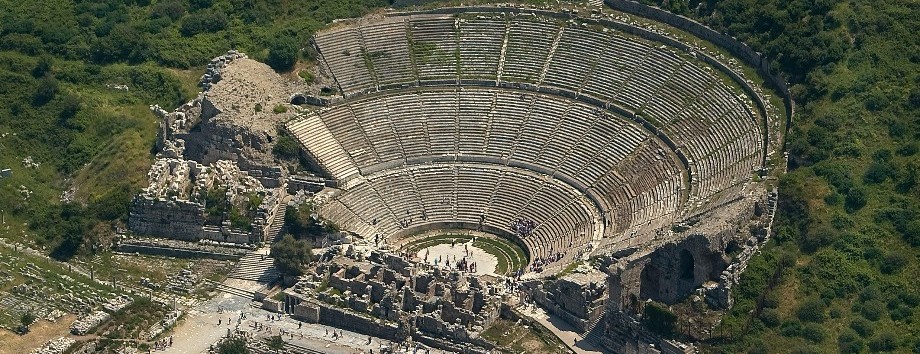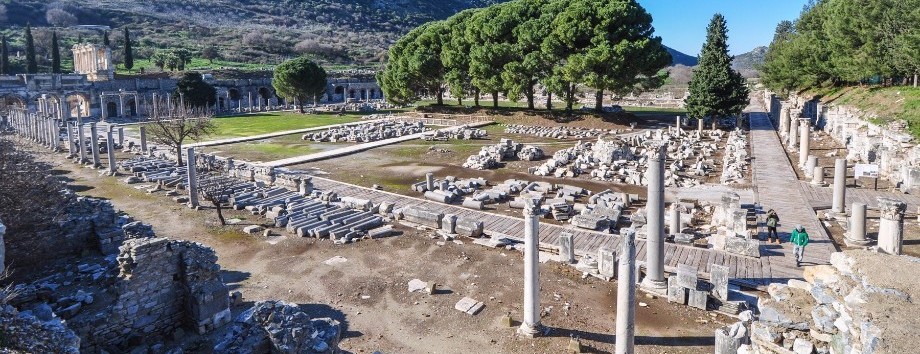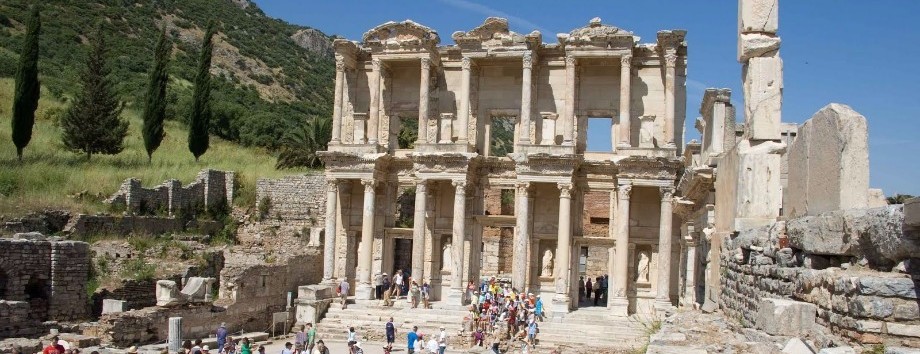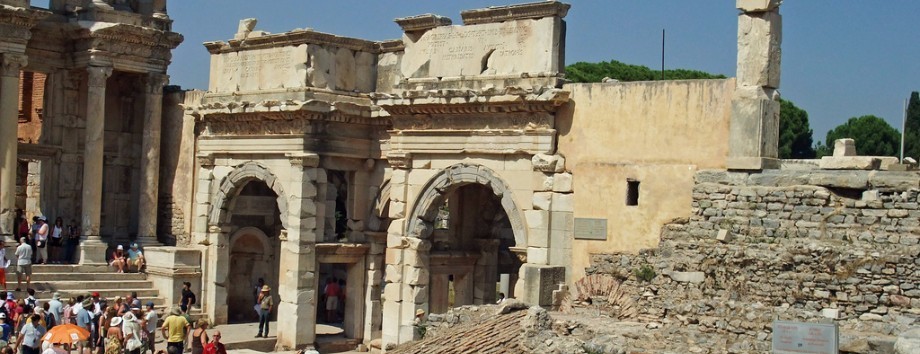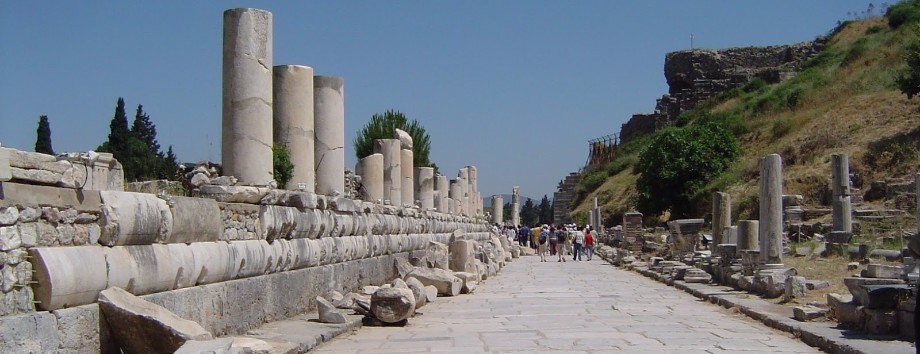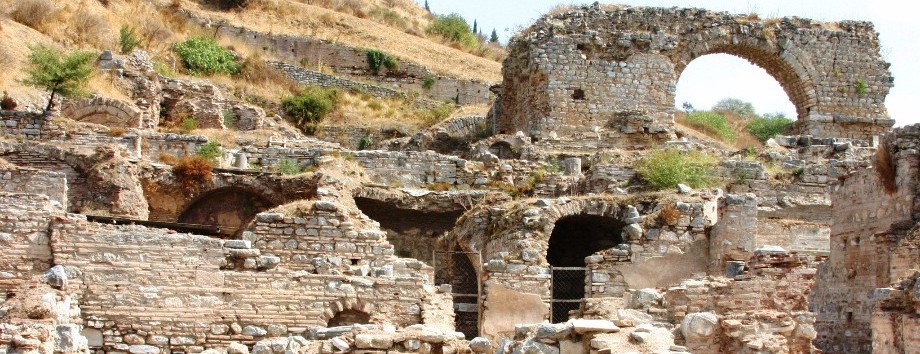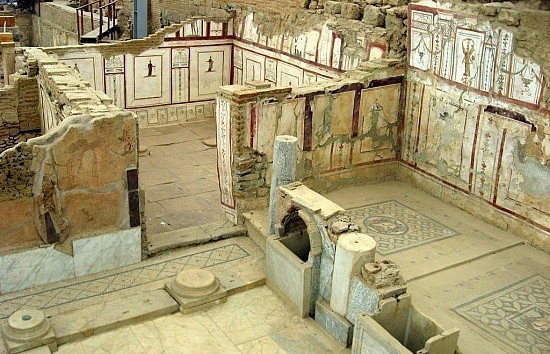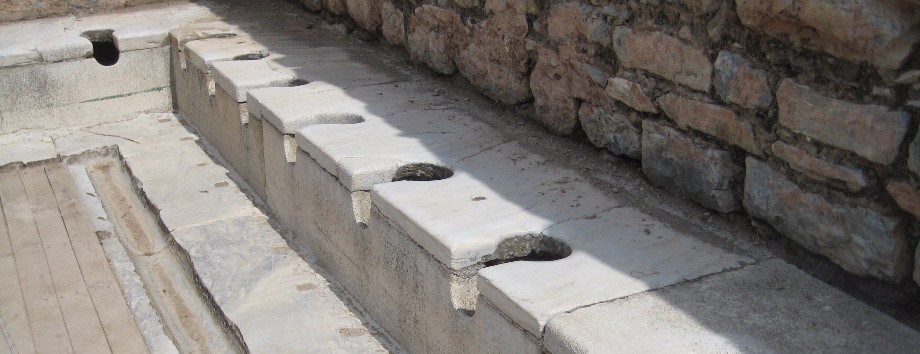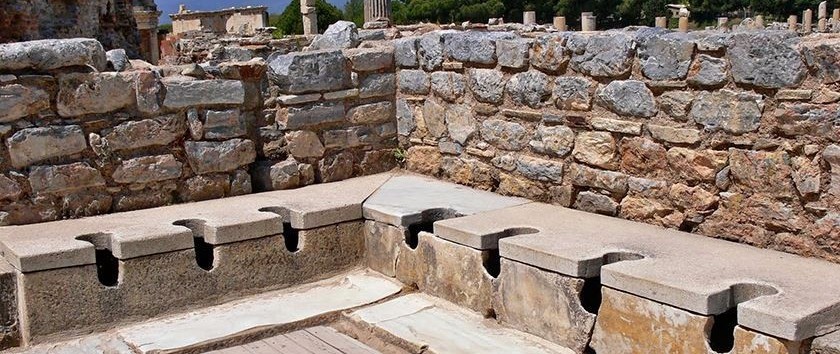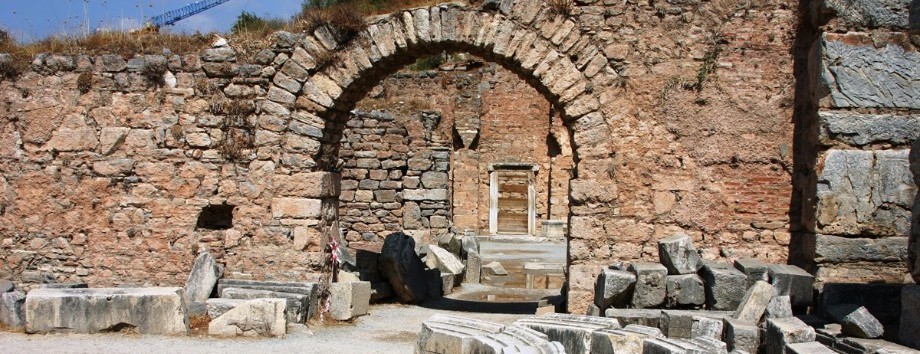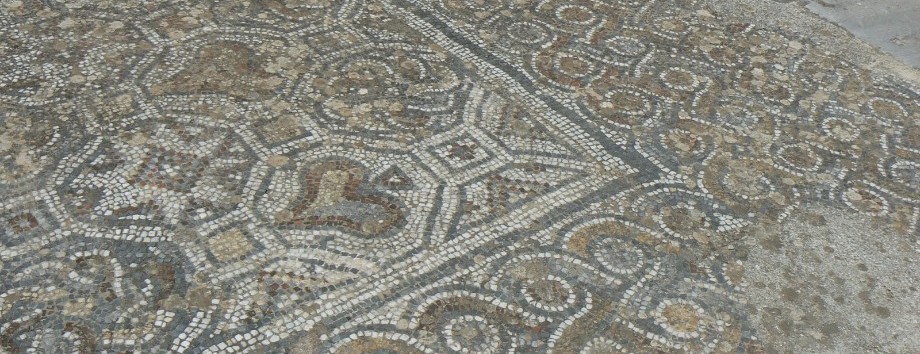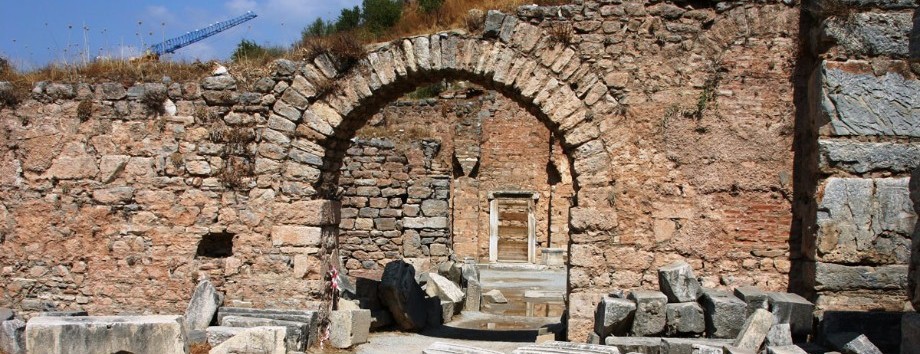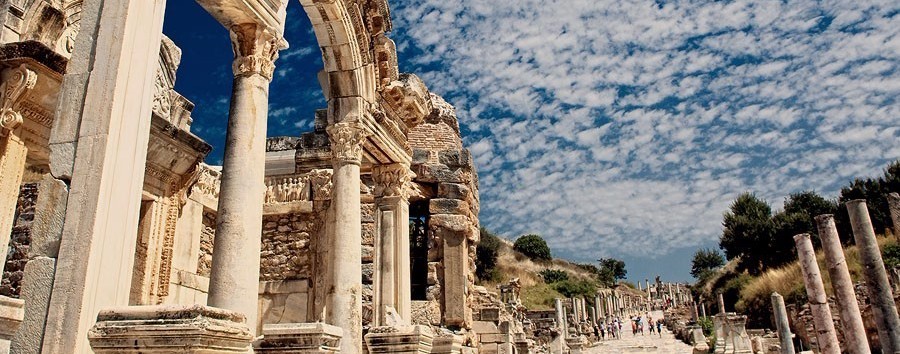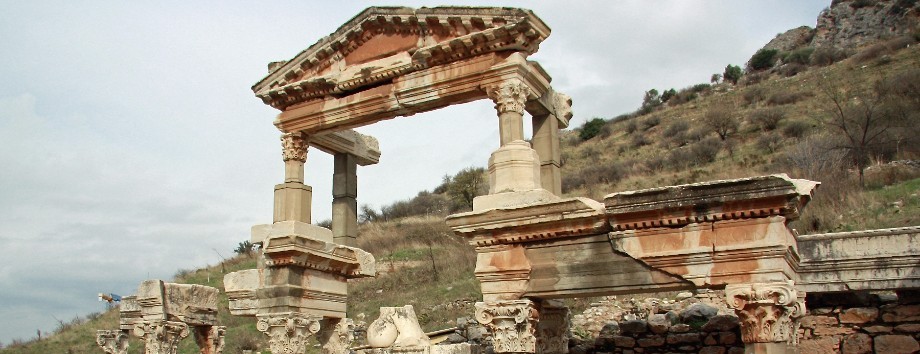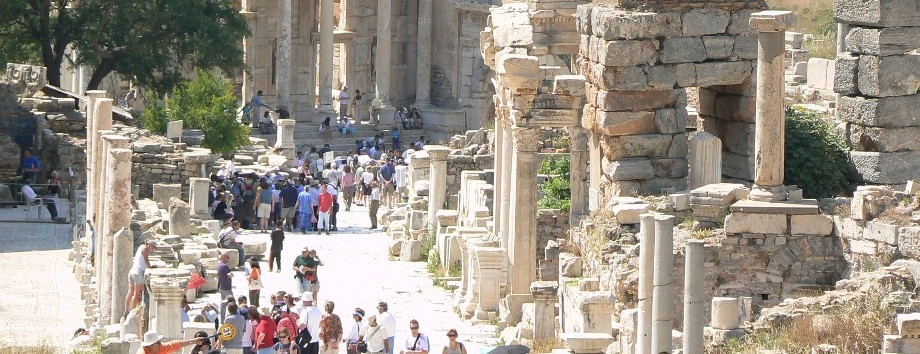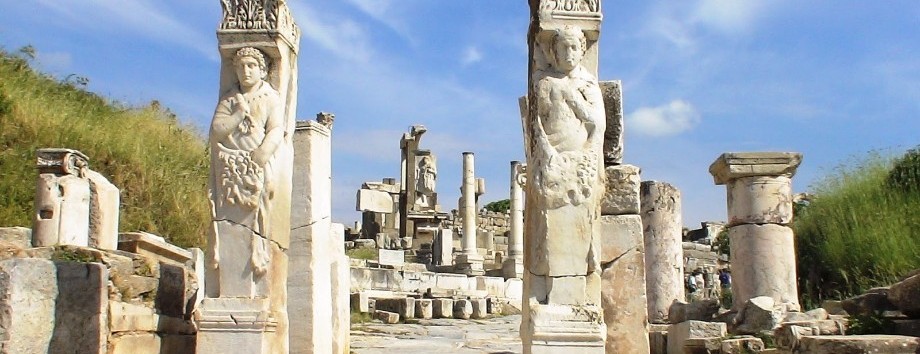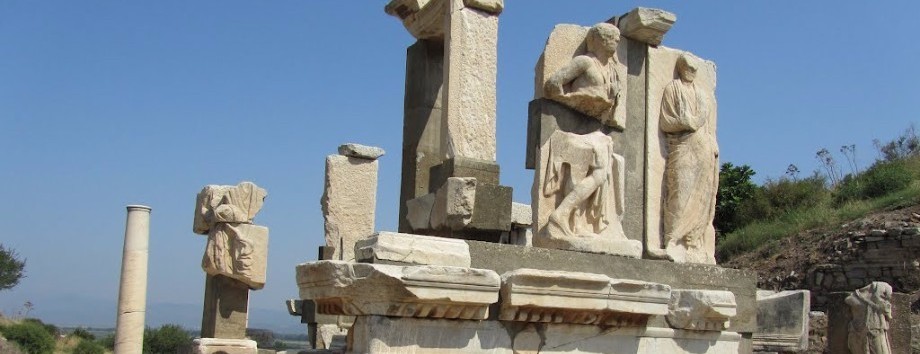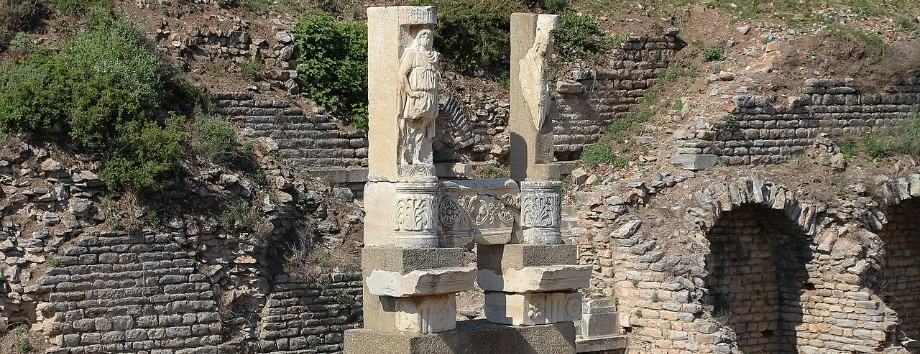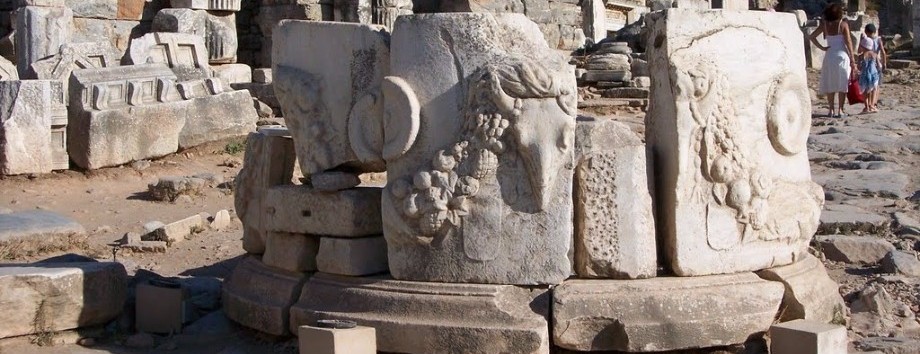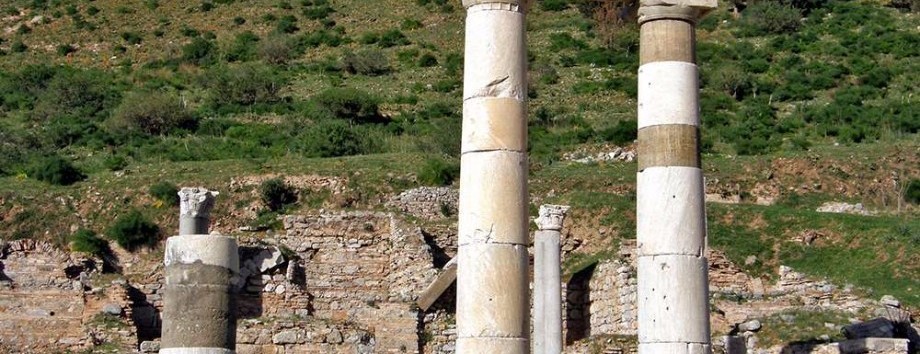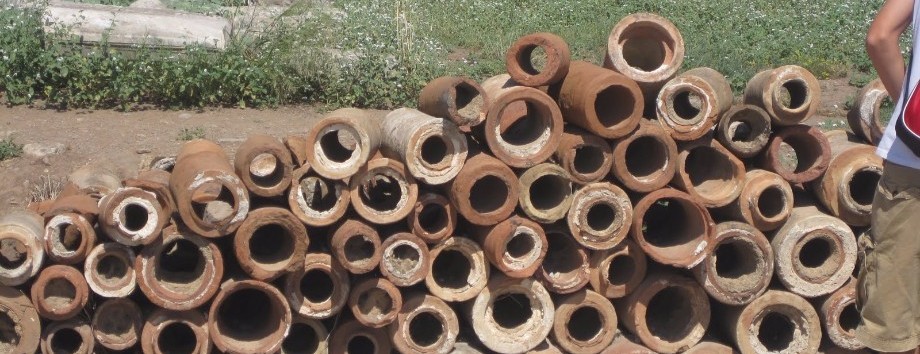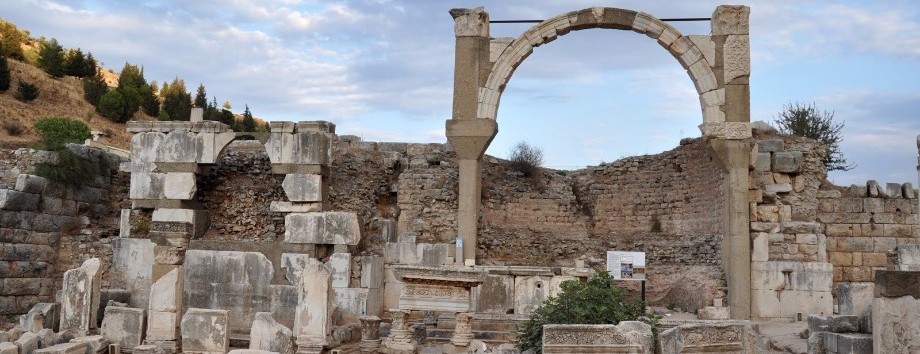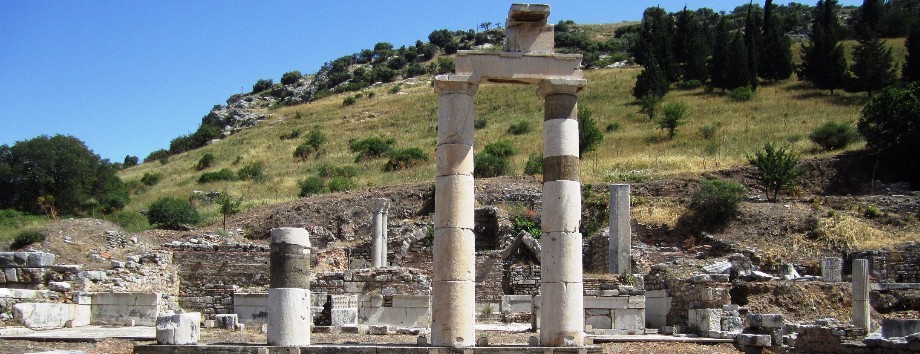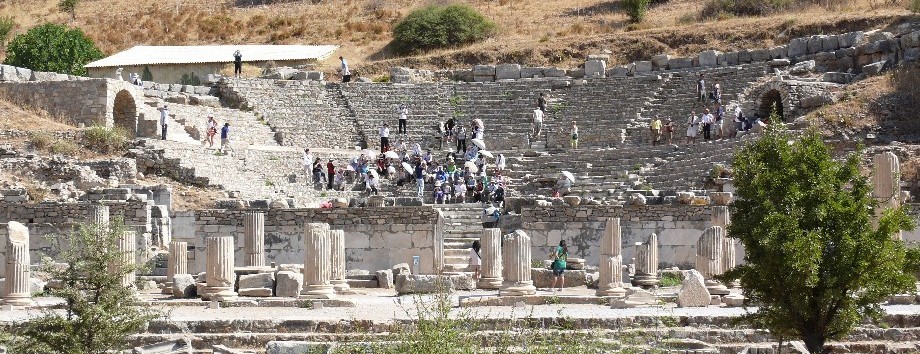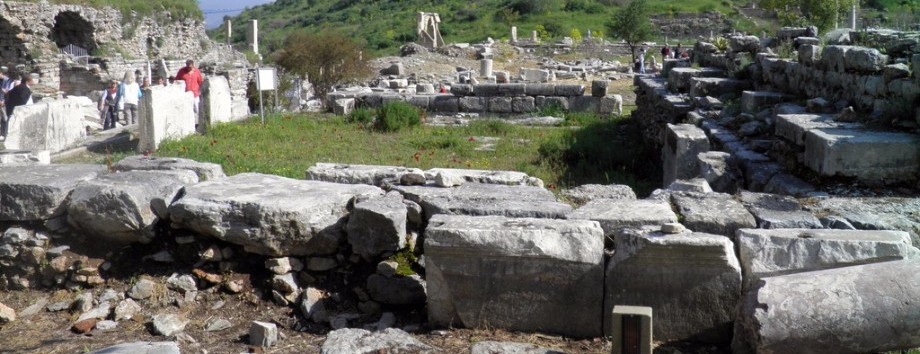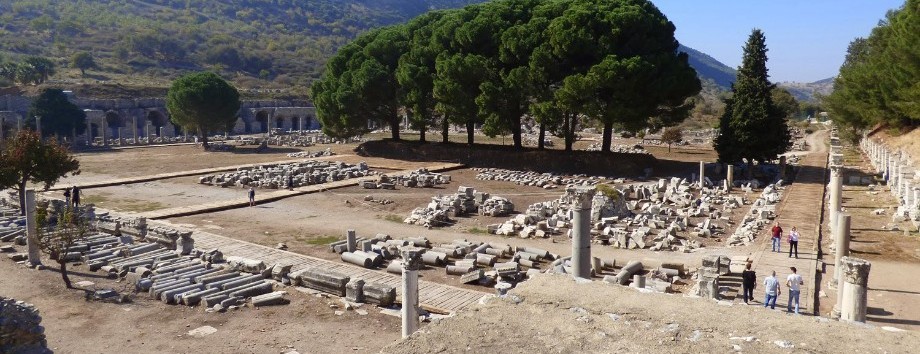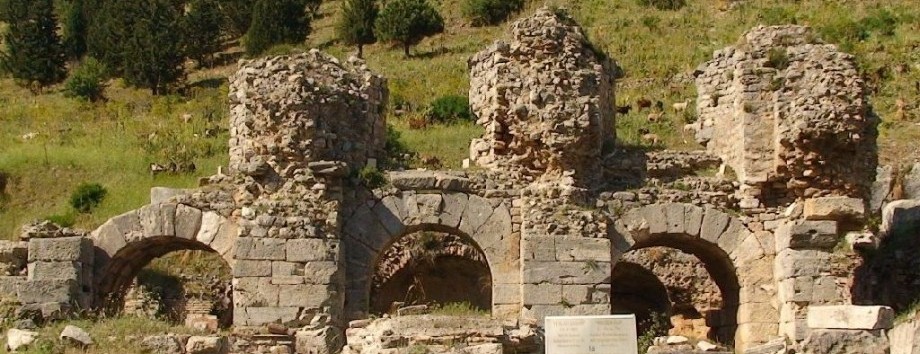Kaart van Efeze
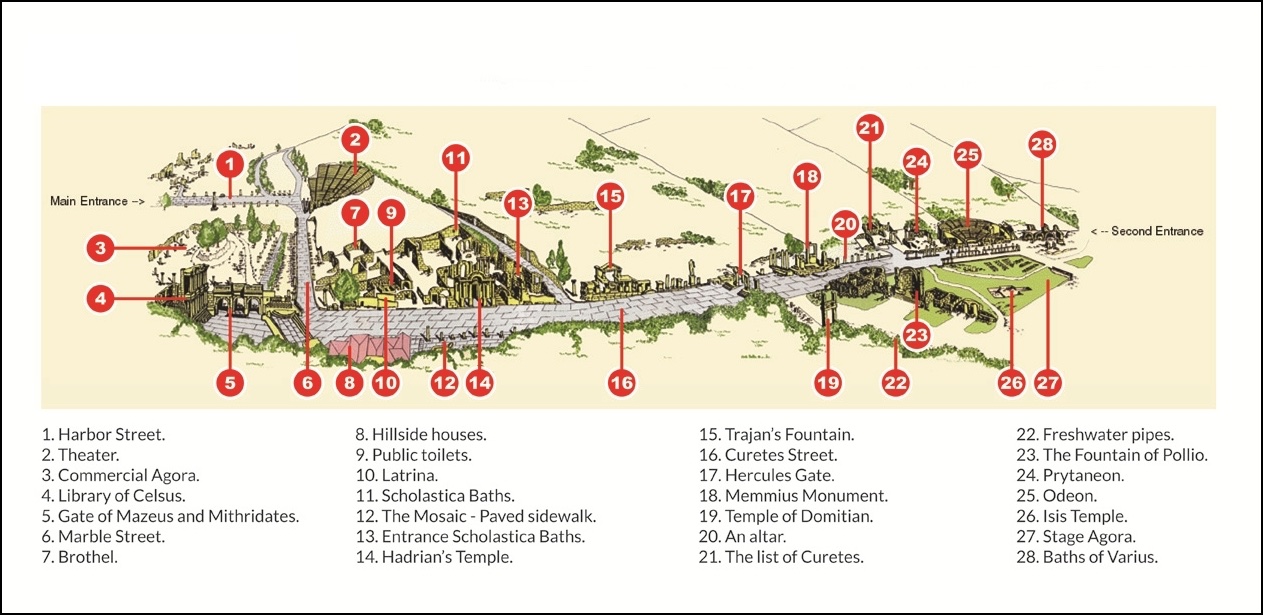
1. Harbor Street
It is one of the three main streets of Ephesus. Harbor Street starts from the theater and end at the harbor. It is 530meters long and there were shops and crosswalks on both sides. This street is also called “Arcadian” and it is about 11 meters wide. It was very close to the harbour and there was 'Four Columned Monument' at the end of the street.
2. The Great Theatre
It is the biggest ancient theater in Turkey with a capacity of 24.000 seats. It was built 4th Century BC. It took 60 years to build this huge Theater of Ephesus. It was a Greek Theater which had been converted into a Roman Theatre. There was a three storied stage building, erected in different times and paid by different Roman Emperor.
3. Commercial Agora
It is one of the two Agoras located in Ephesus with 11,000sqm of size. There were shops on 4 sides of the Agora. It was built on the Hellenistic period and enlarged on the Roman period. It was the biggest shopping area on that period. St Paul worked as a tent maker in the Commercial Agora with Priscilla and Aquila.
4. Library of Celsus
This gate is located next to the Celsus Library and opens to Agora. It was built by the slaves Mazeus and Mithridates 2000 year ago for Roman Emperor Augustus. Mazues and Mithridates were both architects.Then they became slaves of the imperial family of Augustus.
5. Gate of Mazeus and Mithridates
This gate is located next to the Celsus Library and opens to Agora. It was built by the slaves Mazeus and Mithridates 2000 year ago for Roman Emperor Augustus. Mazues and Mithridates were both architects.Then they became slaves of the imperial family of Augustus.
6. Marble Street
It is one of the main streets of Ephesus. It starts in front of Celsus Library, passes Theatre and reaches to the Temple of Artemis. The Library and the Agora are on the right side of the Marble street. Brothel is on the left side of the street. Further on the right there is the theater and further to its left there is a gymnasium. It also cuts the Port Street.
7. Brothel
What it is used for is unknown but according to the common views it was a brothel. It was a large two-story building including a kitchen, a bathroom and a toilet.
8. Hillside Houses ( Terrace Houses)
These luxurious Terrace houses used by the wealthy Ephesians between 1st Century AC to 7th Century AC. Terrace houses section 2 was covered in 1999 and protected. These magnificent houses, mosaics and frescos can be visited since 2002.
9. Public Toilets
These were the only public toilets in Ephesus and it is said that they were for man. Toilets are very well protected. There should be another public toilet for women in Ephesus which hasn't been found yet.
10. Latrina
These were the only public toilets in Ephesus and it is said that they were for man. Toilets are very well protected. There should be another public toilet for women in Ephesus which hasn't been found yet. There were 44 holes on the three sides of Ephesus.
11. Scholastica Baths
It was a beautiful Roman Bath complex located in the centrum along the Curetes Street, Ephesus. It was restored by a rich Christian woman named Scholastica after the earthquake in the 4th Century. There is a statue of Scholastica in the bath. Every room of the bath can be seen.
12. The Mosaic - Paved sidewalk
This was the area for the pedestrians which belongs to the 5th - 6th centuries. These mosaics are located in front of the Terrace Houses. At the Curetes Street which was one of the main streets of Ephesus, there were paths on the each side.
13. Entrance Scholastica Baths
It is the entrance road to the Scholastica Baths.
14. Hadrian's Temple
It is one of the Roman Emperor Temples. Hadrian the Emperor of Rome visited Ephesus twice. Such a beautiful Temple was built honor of him in the 2nd Century AD. Hadrian’s Temple is one of the best ruins in Ephesus and was restored recently. The Hadrian’s Temple was converted into a Christian church in the 4th Century AD.
15. Trajan's Fountain
It is the only monumental fountain in Ephesus, built for a Roman Emperor. It is located on the Curetes Street and built in the beginning of the 2nd Century. It is 9 and half meters tall with 2 storey. It was dedicated to Trajan the Roman Emperor and Goddess Artemis.
16. Curetes Street
It is the main street connecting upper Ephesus to the lower Ephesus. Its ancient name is Embolos. Herakles Gate, Terrace Houses, Hadrian Temple, Scholastica Baths and Hadrian's Gate are located on Curetes Street.
17. Hercules Gate
Hercules Gate is located at the beginning of Curetes street. Heracles' relics are visible on the two columns. It is a gate dividing the upper city of Ephesus. On this gate the frieze of Goddess Nicephorus (Roman Victoria) was situated.
18. Memmius Monument
It was dedicated to the famous general Memmius and his dictator grandfather Sulla. Memmius Monument was built in the 1st Century BC. Nowadays new excavations are showing that there were pipes very close to the monument and a side street nearby.
19. Temple of Domitian
It is the biggest Temple that was built in the city center. It was built for the Roman Emperor Domitian on the 3 floor podium. A huge head and left arm of a Domitian Monument is visible in the Ephesus Museum. The podium of the temple was huge and measured 100 meters by 50 meter.
20. An altar
It is a ruin of an altar located in Domitian Square. There are girlands symbolzing fertality, various fruit and bull head pictures on the altar.
21. The list of Curetes
It is a list of the names of Curetes and Vestia Nuns who took a duty in Prytaneon. Curetes and the Vestal Virgins were in charge with the eternal flame, which was symbolizing the existence of the city.
22. Freshwater pipes
In Roman time fresh water was supplied to Ephesus from 4 different points by the aquaducts. The water was delivered to the city by the clay pipes. Today these original pipes which are 2000 years old can be seen everywhere in Ephesus.
23. The Fountain of Pollio
It is one of the many monumental fountains in Ephesus. It was dedicated to the city by the rich Roman Pollios Sextiliues. This fountain was build and dedicated to Roman Emperor Domitian. It is just opposite the temple of Domitian.
24. Prytaneion
Prytaneon is the place where the holly fire was. The names of the monks and nuns who took a duty here in this place are written on the 2 columns. It was dedicated to the Goddess of Fire Hestia and was the holly center of the city.
25. Odeon
It is located on the upper Ephesus and built by Romans. The Odeon is well-preserved with a capacity of 1400 seats. It was used as a concert hall and parliament. This structure is about 2000 years old and was destroyed in the earthquake in the 7th Century AD.
26. Isis Temple
It is an Egyptian Temple located in the government agora. It was dedicated to the Egypt Goddess Isis. Later in Roman time, it was dedicated to the Roman Emperor Augustus. This was the first temple dedicated to an Egyptian goddess.
27. State Agora
It is the second agora in Ephesus. It is the government Agora. Political subjects were discussed here and it was open to public. Women and the slaves could attend the meetings here.
28. Baths of Varius
It was built by the rich Roman Varius for the Ephesians and located on the upper Ephesus. This bath was built in the 1st century AD and was destroyed in the 7th Century AD.

